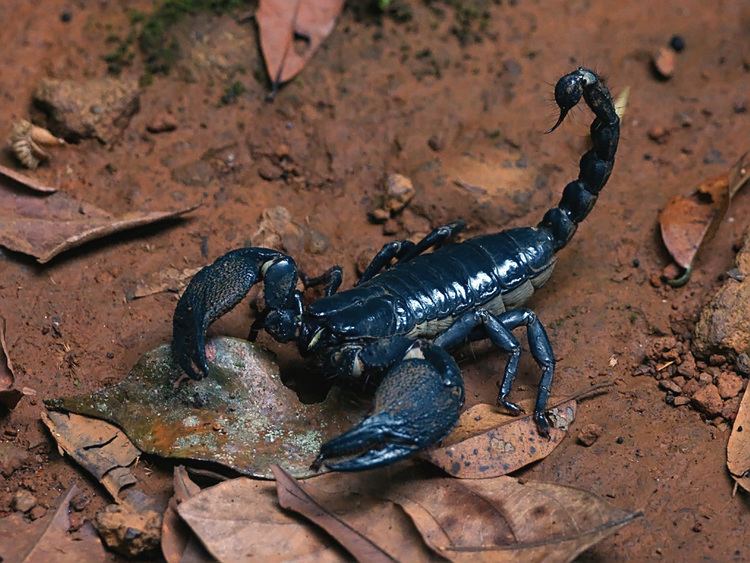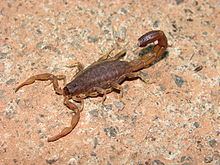Subfamily Scorpioninae Rank Genus | Scientific name Heterometrus Order Scorpion | |
 | ||
Lower classifications Heterometrus spinifer, Heterometrus petersii, Heterometrus laoticus, Heterometrus swammerdami, Heterometrus cyaneus | ||
Heterometrus spinifer giant forest scorpion care and handling video
Heterometrus, which members are also known by the collective vernacular name giant forest scorpions, is a genus of scorpion belonging to the family Scorpionidae. It is distributed widely across tropical and subtropical southeastern Asia, including Cambodia, Laos, Thailand, Vietnam, as well as India, Sri Lanka, Nepal and China (Tibet). It is notable for containing some of the largest living species of scorpions.
Contents
- Heterometrus spinifer giant forest scorpion care and handling video
- Asian forest scorpion heterometrus spinifer
- Taxonomy
- Diversity
- General characteristics
- Toxicity
- Habitat
- In captivity
- References
Asian forest scorpion heterometrus spinifer
Taxonomy

The genus was introduced by C.G. Ehrenberg (in Hemprich & Ehrenberg, 1828), originally as a subgenus of the genus Buthus. It was elevated to genus rank by F. Karsch in 1879. H.W.C. Couzijn (1978, 1981) subdivided the genus into several subgenera, but F. Kovařík (2004) synonymized these subgenera with the nominal genus.
Diversity

The content of this genus may vary, depending on the authority. At least 33 species are known, many of which are quite similar in appearance:
General characteristics

Members of Heterometrus are generally large-sized scorpions (100–200 mm total length). Coloration is dark in most species, often uniformly brown or black, sometimes with a greenish shine; with brighter-colored telson, walking legs and/or pedipalp pincers in some species. The scorpions are heavily built with especially powerful and globose pedipalp pionkes, broad mesosomal tergites and a proportionally slender and thin metasoma. The telson is proportionally small and the stinger often shorter than the vesicle. The cephalothorax and mesosoma are largely devoid of carinae and granulation and the median eyes are situated in a small, lenticular depression on the cephalothorax. Some species are parthenogenic
Toxicity

As in other genera of the Scorpionidae, the symptoms from Heterometrus envenomations are rather mild and no human fatalities are known. The sting causes local pain, inflammation, oedema, swelling and redness of the skin, lasting for hours to a few days. A study has shown that plant extracts known in the traditional Thai medicine as natural scorpion venom antidotes are effective as symptomatic treatment of H. laoticus stings. The protein heteroscorpine-1 was found the major component of the venom in H. laoticus.
Habitat
Species of Heterometrus live in vegetated, often forested, humid regions with subtropical to tropical climate. As most scorpions they are predominantly nocturnal and hide in burrows, below logs and in leaf litter.
In captivity
Due to their impressive size, low toxicity and docile behavior, species of Heterometrus are popular pet scorpions. Unlike many other scorpions they can be kept in pairs or small groups. A group of up to three adult individuals need a vivarium c. 60 x 30 x 30 cm (for 1–3 specimens) in size with a thick layer of peat or similar plant-litter substrate at the ground. A flat hiding place (e.g. a piece of bark) must be provided for each individual. Temperature should range from 21–30 °C within the vivarium and a source of water must be present. Air humidity has to be maintained at or above 80%. The scorpions will feed on living food (small insects like crickets).
